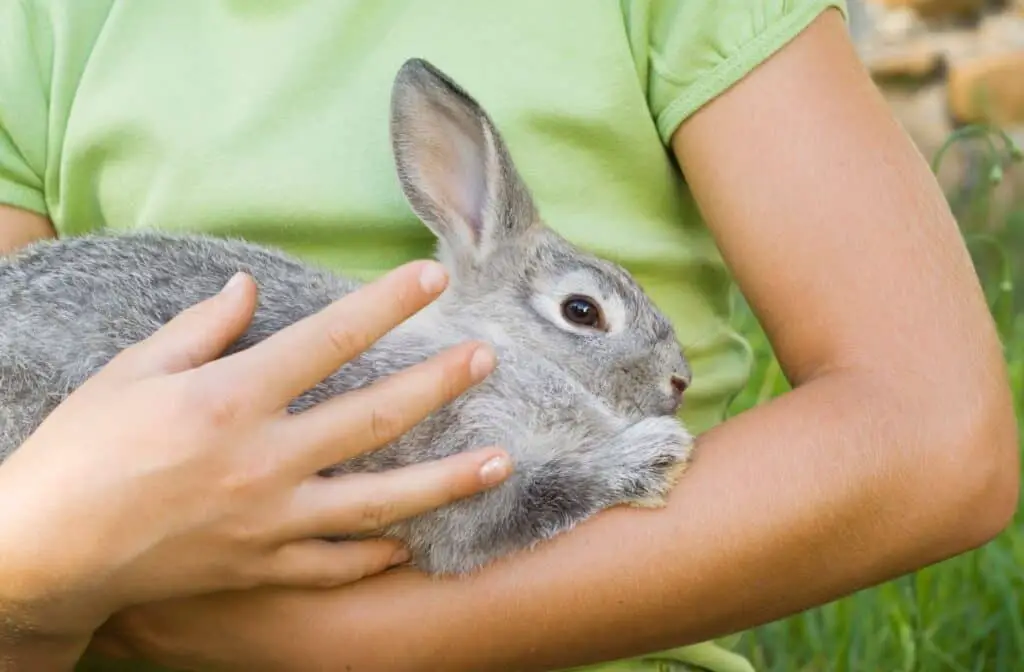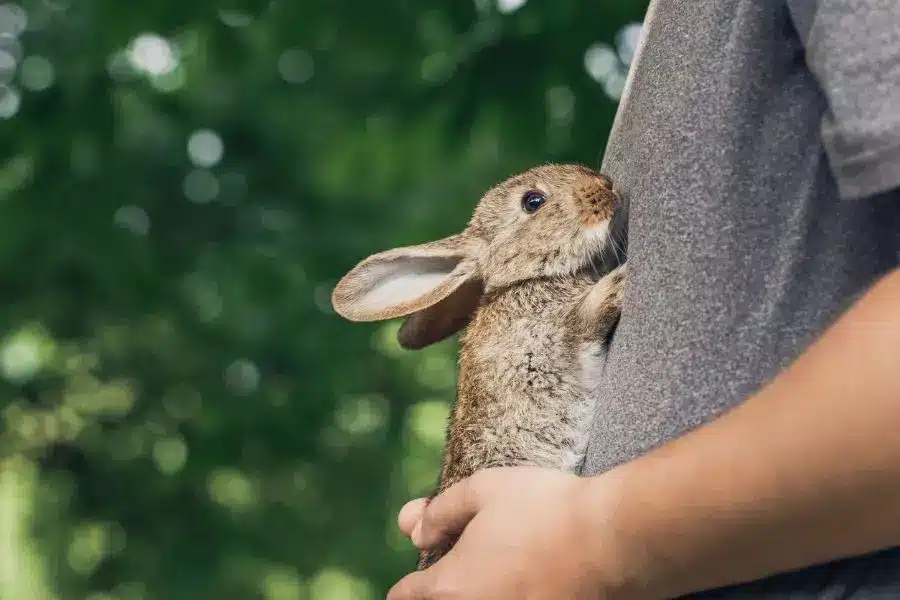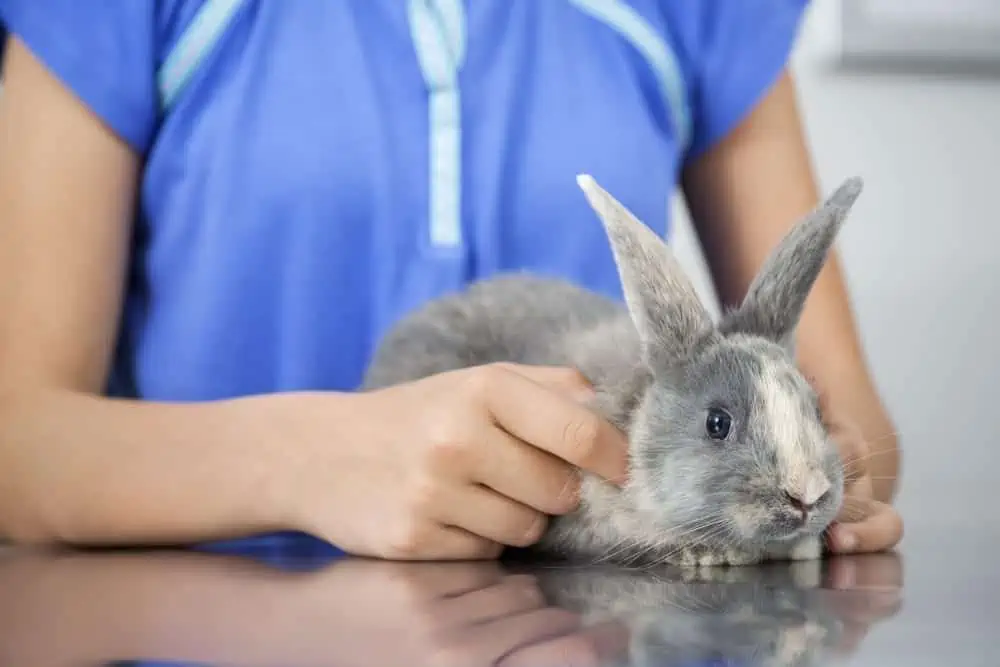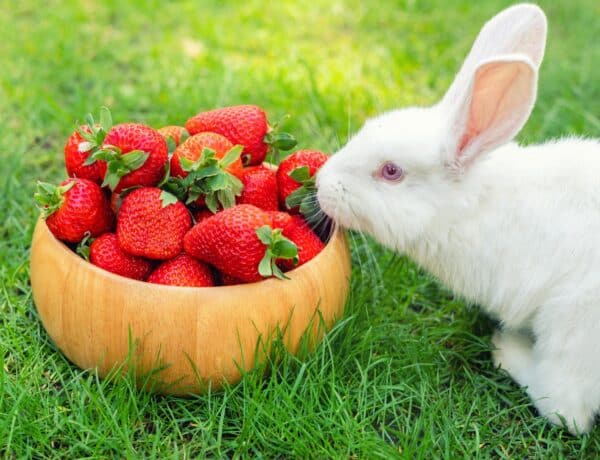Introduction
How To Hold A Rabbit: These small, delicate creatures are known for their gentle nature and endearing personalities, making them wonderful companions for those willing to learn the proper techniques of handling. Whether you’re a new rabbit rodent owner or simply seeking to refine your skills, understanding how to hold a rabbit correctly is essential for both their safety and comfort. In this guide, we will explore step by step the best practices for safely and confidently holding a rabbit, taking into account their unique physiology and temperament. By mastering these techniques, you’ll not only create a stronger bond with your furry friend but also ensure their well-being and happiness. Rabbits, with their inquisitive eyes and soft, velvety fur, have captivated the hearts of pet enthusiasts worldwide. These captivating creatures make for delightful companions, but their fragile nature requires careful consideration when it comes to handling. Whether you’re a first-time rabbit owner or looking to enhance your existing skills, learning the art of holding a rabbit is an essential aspect of responsible pet ownership.
Rabbits are prey animals by nature, which influences their behavior and sensitivity to touch. As such, understanding the proper techniques for holding them is crucial not only to prevent stress and injury but also to cultivate a bond built on trust. This guide is designed to walk you through the steps of safely and confidently picking up and holding a rabbit, addressing factors such as their anatomy, temperament, and preferences. From the basics of approaching a rabbit calmly and gaining their trust, to the precise methods of lifting and supporting their body, we will cover a range of techniques suitable for rabbits of all sizes and personalities. We’ll also delve into the signs of a comfortable rabbit, as well as indicators that it’s time to gently place them back in their environment. By following this guide, you’ll not only ensure your rabbit’s physical well-being but also nurture a sense of security and companionship between you and your furry friend.
Remember, each rabbit is unique, so patience and adaptability are key as you learn to interpret their cues and preferences. With the right knowledge and practice, you’ll soon find yourself confidently cradling your rabbit in a way that benefits both of you. The enchanting world of rabbits is a realm of softness, curiosity, and endearing personalities. If you’ve embarked on the journey of rabbit companionship, learning the delicate skill of holding them is a must. With their delicate bone structure and skittish disposition, rabbits require a special touch when it comes to handling. Whether you’re a novice rabbit owner or a seasoned enthusiast, understanding the intricacies of how to hold a rabbit can deepen your bond and ensure the utmost comfort for your furry friend. In this comprehensive guide, we will lead you through the nuances of rabbit handling, step by step. We’ll begin by unraveling the psychology of rabbits, shedding light on their instinctual behaviors and the factors that influence their reactions to human touch.

Can I grab a rabbit by the neck?
Picking Up Your Rabbit. Never, ever, pick up your rabbit by the ears or scruff of the neck. You’ll hurt them and can cause permanent damage. You want your bunny to be well supported and held firmly, which helps them feel safe.
Rabbits are prey animals, and their natural instincts are geared towards evasion and survival. Approaching a rabbit abruptly or using forceful methods can trigger fear and stress, potentially leading to injury or long-lasting emotional trauma. Unlike some animals, rabbits do not have a loose layer of skin around their necks that can be safely gripped – attempting to do so could cause severe harm.
Rabbits have a sensitive spinal column and a delicate cervical (neck) area. Handling a rabbit by their neck can lead to serious injuries such as fractures, dislocations, or even damage to their delicate internal organs. Their necks are not designed to bear weight or pressure, and grasping them in this manner can cause pain and distress.
To handle a rabbit safely and responsibly, it’s crucial to approach them with gentleness and respect for their nature. Instead of grabbing them by the neck, employ techniques that provide support for their entire body. A popular and effective method involves scooping them up with one hand supporting their chest and front legs, while the other hand supports their hindquarters. This ensures that their weight is evenly distributed and minimizes stress on their spine and neck.
Should I hold my rabbit on its back?
Due to the fear and stress rabbits feel when placed on their back, things like general interactions, routine health checking and grooming should all be carried out without putting them in this position.
Rabbits have a unique physiology and behavior that makes holding them on their back a complex issue. Unlike some other animals, rabbits are prey animals with a natural instinct to escape from potential threats. When placed on their backs, some rabbits might enter a state of tonic immobility, a response that occurs in certain stressful situations. During this state, a rabbit might appear limp or motionless, which can mistakenly be interpreted as relaxation.
However, tonic immobility is not a sign of contentment or relaxation in rabbits. It’s a response triggered by stress, and it’s thought to be a defense mechanism where the rabbit’s body enters a temporary state of paralysis as a way to protect itself from perceived danger. Holding a rabbit on its back can induce this state, and the rabbit may be unable to move or respond as it normally would.
In addition to the potential stress and discomfort it causes, holding a rabbit on its back can also lead to physical complications. Rabbits have a relatively delicate skeletal structure, and placing them on their back can strain their spine and internal organs. This position can restrict their ability to breathe comfortably, leading to distress and anxiety.
Where not to hold a rabbit?
Hold rabbits gently but firmly – ensure one hand supports their back and hindquarters at all times. Help them feel secure by holding all four feet against your body. Never pick rabbits up by their ears – this would be extremely stressful and is highly likely to injure them.
Avoid the Back and Spine: Rabbits have a relatively fragile backbone and spinal structure. Avoid putting pressure on their back or spine, as this can lead to serious injuries, discomfort, or even paralysis. Instead, focus on providing support to their body by cradling them gently with both hands.
Stay Away from the Stomach: The stomach area is another sensitive region for rabbits. Applying pressure or attempting to lift them from their belly can cause stress and discomfort. Rabbits have a natural instinct to protect their stomach area, so handling them there might trigger anxiety.
Be Cautious with the Ears: While a rabbit’s ears might appear resilient, they are actually quite sensitive. Avoid grabbing, pulling, or tugging on their ears, as this can cause pain and distress. Instead, let your rabbit dictate how much they’re comfortable with you touching their ears.
Do rabbits recognize their owners?
Ask any bunny owner who interacts regularly with his pet and he’ll tell you that, just like dogs or cats, rabbits get to know their owners well. They recognize them by voice and sight and will even come on command. Bunnies may even follow their owners from room to room and jump up on their laps when called.
Rabbits possess keen senses, particularly in the realms of smell and hearing. They can differentiate between various scents, including the scent of their owners. Your rabbit might become accustomed to your scent over time, associating it with positive experiences such as feeding, playtime, and gentle interactions. This familiarity with your scent can contribute to their overall comfort around you.
Furthermore, rabbits are observant creatures. They pay attention to patterns and routines, which means they might learn to anticipate your presence during certain times of the day. For instance, if you consistently interact with your rabbit in the morning or evening, they may become excited or responsive when they sense those familiar times approaching.
Rabbits also respond to voice tones and gestures. While they may not understand the specific words you’re saying, they can pick up on the tone and intention behind your speech. Speaking to your rabbit in a soothing and gentle manner can help them feel secure in your presence.
Are rabbits safe to touch?
Rabbits can be infected with tularemia, which may be transmitted to people if they eat undercooked, infected meat or handle a sick animal. Although it’s always best not to handle any wild animal, wear gloves if you must handle a wild rabbit and wash your hands thoroughly afterwards.
Move Slowly: Sudden movements can startle rabbits. Approach your rabbit calmly and gradually, giving them a chance to observe you before attempting to touch them.
Offer Your Hand: Allow your rabbit to approach you on their terms. Extend your hand, palm down, for them to sniff and investigate. This helps them become familiar with your scent and presence.
Observe Body Language: Pay attention to your rabbit’s body language. If they are tense, thumping their hind legs, or moving away from you, it’s a sign that they might not be comfortable with touch at the moment.
Is it okay to touch a bunny?
Most rabbits will be very happy to be pet for long periods of time, but there are areas that they prefer not to be touched. A rabbit who is pet in these areas is likely to jump away instead of relax: Butt: A rabbit’s bottom, right around their tail, tend to be a sensitive spot where they don’t like to be touched.
respect Their Space: Bunnies have personal boundaries just like humans do. Observe their body language and behavior. If a bunny is hiding, thumping their back legs, or displaying signs of distress, it’s best to give them space and avoid touching them at that moment.
Create a Positive Environment: Make sure the bunny is in a comfortable and secure setting before attempting to touch them. A calm and quiet environment can help put the bunny at ease.
Use Slow Movements: Approach the bunny slowly and avoid sudden movements. Extend your hand for them to sniff and investigate before attempting to touch them.
Watch for Signs of Acceptance: Bunnies that are comfortable with being touched may lean into your hand, close their eyes, or display relaxed body language. These signs suggest that they are receptive to interaction.
Can I hug a bunny?
Most rabbits will not enjoy being held and hugged in your arms, but they will enjoy gentler forms of cuddling. For me, cuddling means simply being able to sit or lay next to your rabbit without them hopping away from you.
Body Structure: Bunnies have a delicate skeletal structure, and their bodies are not built to withstand the pressure that hugging can put on their spine, ribs, and organs. Restraining them tightly can lead to discomfort, injury, or pain.
Natural Behavior: Bunnies have distinct ways of showing affection and bonding, which often involve behaviors like grooming, snuggling, and exploring together. These behaviors allow them to connect without compromising their natural instincts.
Stress and Discomfort: Being held in a hugging position can cause bunnies significant stress and discomfort. They might struggle to escape or exhibit signs of distress, such as rapid breathing, thumping, or biting.
Will my rabbit trust me again?
The best way to gain your rabbits’ trust is by simply spending lots of time being near them, while allowing your bunnies to approach you in their own time. By sitting quietly with them in a safe enclosure, you’ll show your rabbits that you aren’t to be feared and that you can be trusted.
The journey of rabbit companionship is a dynamic one, filled with moments of joy, growth, and challenges. If you find yourself in a situation where your rabbit’s trust has been compromised, whether due to a negative experience or a change in their environment, the question arises: can your rabbit trust you again? The answer is a resounding yes. With patience, understanding, and a commitment to positive interactions, you can rebuild and strengthen the bond of trust between you and your rabbit.
Rabbits are incredibly perceptive animals. They pick up on changes in their surroundings, shifts in routines, and even the emotions of those around them. If a rabbit has experienced stress, fear, or discomfort, their trust in their environment and the people within it might waver. But just as rabbits are attuned to negative changes, they also respond to positive efforts aimed at rebuilding their sense of security.

Conclusion
In the captivating world of rabbit companionship, the art of holding these gentle creatures transcends mere technique; it becomes a language of trust, respect, and understanding. Throughout this guide, we’ve explored the intricacies of how to hold a rabbit, from the careful approach to the nuanced techniques that cater to their individual needs. Rabbits, with their delicate bone structure and instinctual behavior, require a unique approach to handling. By immersing ourselves in their world, we’ve uncovered the importance of patience, gentle touch, and attunement to their cues. The process of lifting and cradling a rabbit isn’t just about physical contact – it’s a bridge that connects human and rabbit, creating a bond that’s built on mutual comfort and respect.
Remember that each rabbit is a distinct personality, responding in their own way to your touch and presence. Learning to decipher their nonverbal communication, recognizing signs of ease and anxiety, allows you to adjust your handling techniques accordingly. By engaging with your rabbit’s emotions and preferences, you’re fostering an environment where they feel secure and cherished. As you embark on this journey of rabbit companionship, hold onto the insights and practices shared in this guide. The relationship you forge with your rabbit is a dynamic one, evolving with time and experience. By continuously refining your understanding of how to hold a rabbit, you’re laying the foundation for a companionship filled with warmth, trust, and joyful moments that define the unique bond between humans and these charming, furry friends.
In the intricate tapestry of rabbit care, the art of holding these enchanting beings is a thread that weaves together trust, safety, and companionship. This guide has illuminated the path to understanding how to hold a rabbit – a path that goes beyond physical techniques to embrace the emotional connection between human and rabbit. Throughout these pages, we’ve ventured into the world of handling rabbit, acknowledging their fragility, sensitivity, and unique personalities. The act of holding a rabbit becomes a dance of communication, where patience, gentleness, and empathy are the choreographers. From the initial approach to the moment you cradle them in your arms, you’re engaging in a dialogue that transcends words. As you navigate the terrain of rabbit companionship, remember that your efforts are not just about mastering a skill, but about building a rapport. Every rabbit is an individual with their own preferences and boundaries. By immersing yourself in their body language, their sighs of contentment, and the moments when they seek solace, you’re strengthening the bond that ties you together.





No Comments